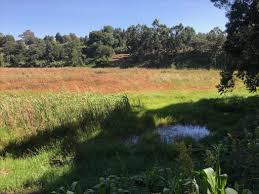

Ondiri Wetlands./HANDOUT
Wetlands: A Race Against Time
Wetlands, the planet’s lifeline, are
disappearing faster than any other ecosystem, with devastating consequences, a new report has shown.
The Global Wetland Outlook
2025: Valuing, Conserving, Restoring and Financing Wetlands (GWO 2025) report warns that without urgent action, we could lose another 20 per cent of the world’s
remaining wetlands by 2050.
The impact? An ecological and economic
catastrophe—up to $39 trillion
in benefits gone, affecting people, economies and nature worldwide.
“Wetlands bankroll the planet, yet we’re still
investing more in their destruction than recovery,” said Dr Musonda
Mumba, secretary general of the Convention on Wetlands. “Restoring them could
unlock $10 trillion in benefits—but time is running out.”
The report, released Tuesday, is the most comprehensive assessment of wetlands to date, building on
the 2018 and 2021 editions. Its release comes ahead of the 15th Meeting of the
Conference of the Contracting Parties (COP15) to be held in Victoria Falls,
Zimbabwe, from July 23 to 31.
Why
Wetlands Matter
Despite covering just six per cent of the earth’s surface, wetlands provide ecosystem services valued at more than 7.5 per cent of global GDP—from clean water and food production to flood protection and
carbon storage.
They also underpin millions of
livelihoods across agriculture, aquaculture and tourism.
And yet, 0.52 per cent of wetlands vanish
every year, eroding nature’s ability to fight climate change and
biodiversity loss.
Since 1970, we've lost 22 per cent of all
wetlands—an area the size of more than half a billion football fields.
A quarter of what remains is in poor condition, with Latin America, the Caribbean, and Africa experiencing the steepest declines.
“Wetlands are not a side issue—they’re
fundamental to the global water cycle and essential to billions of lives,” said
Dr Hugh Robertson, chairperson of the Scientific and Technical Review Panel. “We
know what works. What’s needed now is bold, sustained investment.”
The report provides a blueprint for reversing the trend, supported by global data, economic analysis, and case studies that demonstrate action is possible and cost-effective.
Kenya’s wetlands—ranging from coastal
mangroves to Rift Valley lakes—cover three to six per cent of the landmass, depending on the
season. These ecosystems are not just biodiversity hotspots; they are also economic engines that support tourism, farming, fisheries, and clean water.
Some are world-renowned and are recognised as
national parks, Ramsar sites, World Heritage sites and critical bird habitats.













